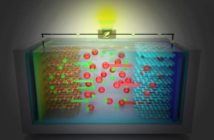An electric toothbrush is a motorized toothbrush. A motor is located within the handle that allows the toothbrush head to move rapidly in either a back and forth or rotational motion.

Humble Beginnings
Use of the electric toothbrush started in the year 1954 in Switzerland wherein it was directly plugged to a wall outlet. During the 1960s, the cordless electric toothbrush was introduced. It used bulky rechargeable NiCad batteries, which were the same size as a D-cell battery. These NiCad batteries had metal tabs that are connected with a charging base. From then on, improvements on the size of handle, portability, and design were made.
Current Design
Currently, electric toothbrushes are portable and all parts are completely covered in plastic; no metal parts are exposed. The whole unit is hermetically sealed. This design is meant to prevent water from entering the unit and causing damage. It also minimizes electrocution to the user. Modern designs use inductive charging.
Inductive Charging
Inductive charging, or wireless charging, uses an electromagnetic field in transmission of energy between two objects.
In the case of an electric toothbrush there are two coils in a unit: one coil is located at the charging base and another on the base of the toothbrush. Each coil creates a current and produces an electromagnetic field essential to the operation of the unit. When the two coils come into proximity with each other, energy is transmitted. The coil on the charging base gives energy and the second coil on the base of the toothbrush receives the energy. Once energy is received, it charges the batteries inside the electric toothbrush.

Related Articles:
Rechargeable vs. Single-Use Batteries



